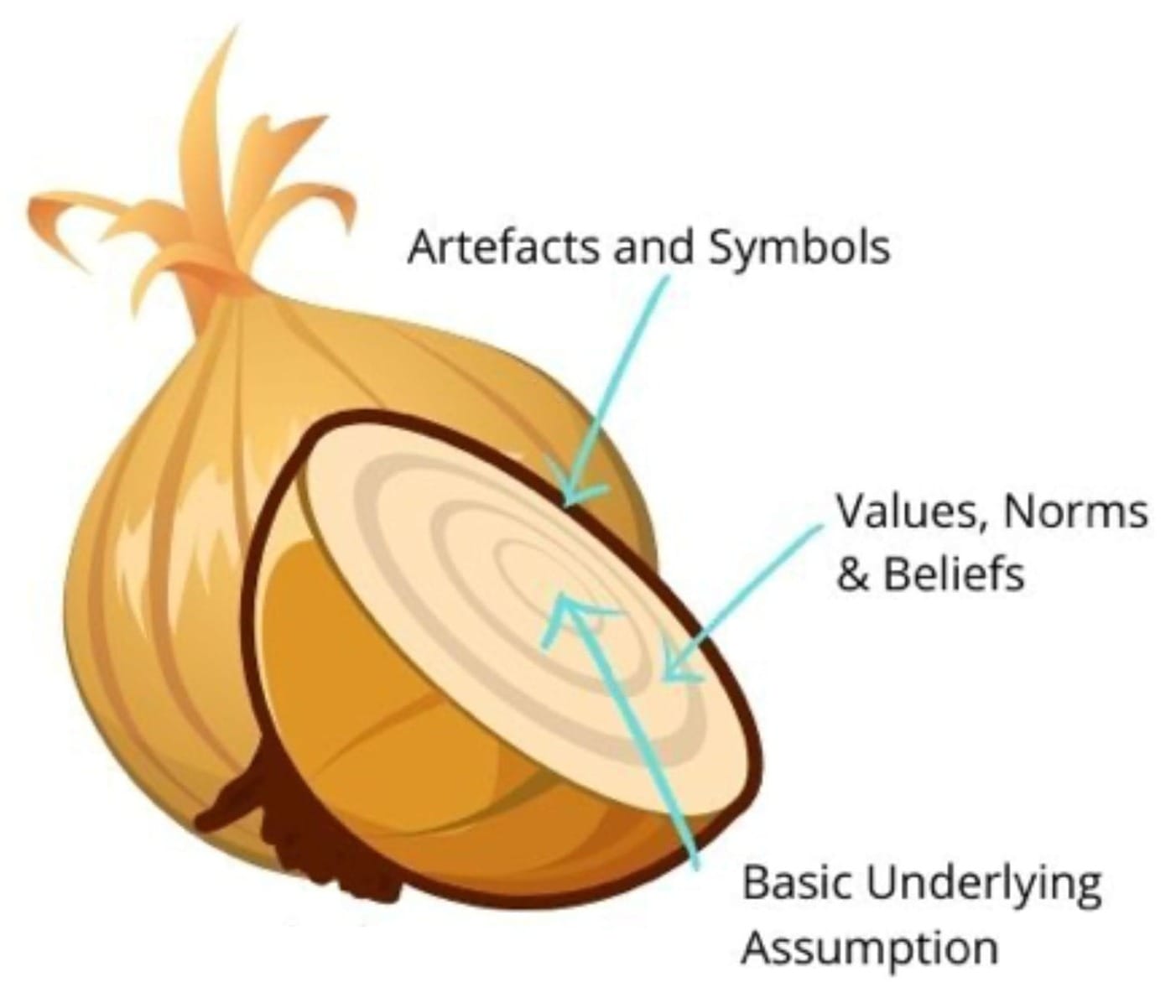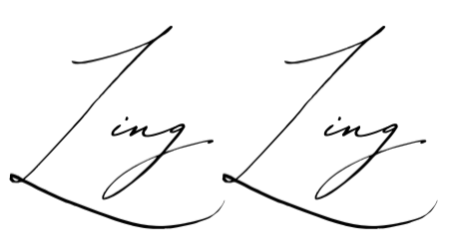Is The Onion Better Than the Iceberg?
Both the Cultural Onion and the Iceberg model have been used to describe and understand various cultural groups. Which do you prefer?

Upon arriving at the Changi Airport in Singapore one afternoon, I hurried to the closest fast-food joint with my luggage. Starved, I quickly satisfied my grumbling stomach before heading home. Two hours later, I was horrified. A bag was missing. In a panicked state, I called the "lost and found" helpline. My luggage was not turned in.
Two hours later, I arrived at the fast-food joint, hoping against hope that my bag might still be there.
Lo' and behold, there it was. My luggage was untouched and undisturbed as if taking charge and guarding the table.
This is the uniqueness of Singapore culture. It is a norm to leave an item on the table to "reserve" it while people buy or collect their food. These items are typically a tissue packet, a business card, or anything not valuable, like a wallet or a phone.
To an outsider, a pack of tissues on a table may not mean much. When I first encountered this, I thought, "Singaporeans are so kind. They leave behind extra tissue for the next person." An angry local might assume or misunderstand that a stranger "stole" their reserved table.
Indeed, discovering, learning about, and understanding a new culture requires tremendous effort, trial and error. However, the learning process might be more manageable with the help of models. In this article, we introduce the Cultural Onion.
What is the Cultural Onion Model?
The onion is a juicy and bulbous vegetable, ever-present in our daily meals. Our nose retracts in its pungent aroma, and our eyes tear up when chopping it. Like the onion, discovering, learning, and understanding another culture can be emotional (or tearful) and onerous (or odorous). When you know the onion well, accept and embrace it, it becomes pervasive in your life.
Edgar Schein, a Swiss-born American business theorist and psychologist, initially developed the Cultural Onion Model to explain organisational culture. Yet, the model has been extensively used to describe and understand various cultural groups apart from organisations. It is also usually cited along with the Iceberg Model.
Onions start from seeds in the soil. They draw nutrients from the environment (or soil) throughout life and grow in many layers. It usually takes 12 to 18 weeks for an onion to grow into a full-sized onion.
Yet, the onion cannot grow to its full size overnight. Likewise, a group or organisation does not adopt a new culture overnight. People learn from past experiences and adopt new practices in their everyday lives. And so, culture forms as people experience changes, respond to events, adapt to environmental changes, and evolve through lessons learned. This happens over a long time.

How does the Onion Model work?
The onion model contains three layers wrapped around each other. The outermost layer refers to artefacts and symbols. The layer beneath that is linked to espoused values or cultural norms. The innermost layer represents deeply held assumptions.
The Outer Layer: Artefacts and Symbols
The outermost layer represents artefacts and symbols. Artefacts and symbols refer to the sights, sounds, smells, colours, dressing, mannerisms, etc. In other words, everything that can be observed and sensed.
For an outsider, the barrage of new sights, sounds, smells and touch can overwhelm the senses when entering a new culture. According to Schein,
The most important point about this level of culture is that it is both easy to observe and very difficult to decipher.
Overwhelming as it might be, the newcomer will appreciate this newness by pausing a moment and taking a step back. Before jumping to conclusions or judgments, ask yourself… What do I see?
Take the "reserving" table culture in Singapore, for example. It is easy to jump to a conclusion. The conclusion could be that locals are kind enough to provide spare tissue packets, or inconsiderate for not clearing their trash, or many other conclusions.
Pause. Take a moment. Hold your judgement. Answer the question. The answer might be, "I see a (un)used pack of tissue on the table."
The Middle Layers: Espoused values, norms, and beliefs
The wonderful middle layers of the onion model are a culture’s espoused values, norms and beliefs. These layers capture the unwritten and unspoken standards of acceptable behaviour.
The middle layer is not as visible as the artefacts and symbols of the outer layer. Instead, we need to peel back the layers, one by one, to learn about the underlying values, norms and beliefs. One question to peel back the layer is, what is acceptable behaviour?
With this question, you can reflect and brainstorm many different answers, which may give clues for the observed behaviour. Using the tissue-on-table example, the acceptable behaviour could be leaving an item of no value to reserve a table or leaving tissue as a courtesy to the next patron. It could be that leaving behind a tissue packet is acceptable because it's the servers’ job to clear them. It could be anything!
Keep your investigative hat on. Verify the list of possible answers with more observations and through conversations with locals. This exercise keeps your mind open to undiscovered possibilities. Most importantly, it prevents you from being stuck with one and often biased answer.
The Core: Basic Underlying Assumptions
The innermost layer, or the core, is the basic underlying assumption. Schein calls this the ultimate source of values and actions. As an outsider, this layer is the hardest to understand. This is because the group members themselves are unaware and often unable to explain these assumptions.
The people who carry out these cultural practices are unconscious of the layer of basic underlying assumptions. These beliefs, perceptions, thoughts, and feelings are often taken for granted. As an outsider, the question that can help unravel the core is, Why is this behaviour desirable?
Like the middle layer, you must contemplate and brainstorm as many answers as possible. With the same example, the underlying assumption could be, "I have the right to use the table because I came first". Or "Everyone needs a little help. A small gesture can cheer another." Or "If I don't leave anything, the waiters will be without a job." Through observations and conversations, answers will slowly uncover the basic underlying assumption.
Is the Onion better than the Iceberg?
When you learn, describe and understand a culture, the Iceberg is typically used in comparison with the Cultural Onion. They are like two seasoned boxers facing each other heads. One on each corner of the ring while their fans cheer from the side. Both are strong contenders, and both have strong supporters. Each model is good at certain things but not at others.
The Iceberg Model is an excellent reminder that there is more to culture than meets the eye. When faced with an unexplainable situation, the Iceberg will say, "Wait, what is happening underneath? Can I see it?"
The Iceberg tends to assume that everything unknown about culture is mysterious or too deep to understand. The only way to know is to be a skilled scuba diver, diving deep into cold waters to see the depths of the cultural iceberg.
People might become complacent when culture is seen as too deep or too mysterious. "It's too hard. I'll be myself, and it'll be fine."
People might make excuses. "Well, I'm not from here. I will never know." Or people might give up, "There's no point in learning this."
When values and beliefs are seen as deep and mysterious, people accept behaviours as they are and do not venture further to discover and learn about them.
On the other side of the ring is the Onion Model, which has three layers. The three layers come with three questions that can help us to investigate a specific cultural instance. Rather than treating the depths of culture as dark and mysterious, the onion digs in, layer by layer, to reveal several possible meanings behind an observable behaviour.
Yet, the onion works best when investigating specific observable instances. It lacks the ability to define the generalities of a culture. How can we know whether this specific instance means the same thing at another time and place? When we see a lanyard on a table in the city centre, does it mean the same thing as the tissue packet?
Also, we may come up with many answers in answering the three questions. But these answers are difficult to verify. Ask different people, and you may get different interpretations.
Where does this leave us?
Both the Onion and the Iceberg are easy to use. Both models are beneficial for learning. Both models can be included in self-reflection, group discussions, lectures, and training programs. Both models have their weaknesses in understanding culture.
No matter which you choose, be clear about your objectives or goals for using the model. Between the two seasoned boxers, who will you support?
This post is updated from the originally published post on Culture Spark Global on 30 September 2021 and written by the same author, Ling Ling Tai.





